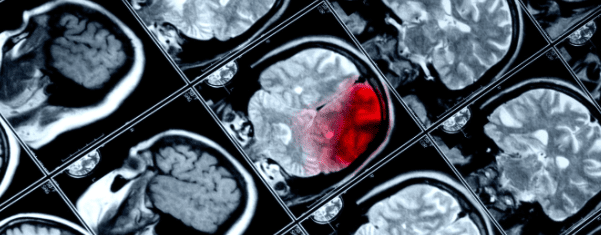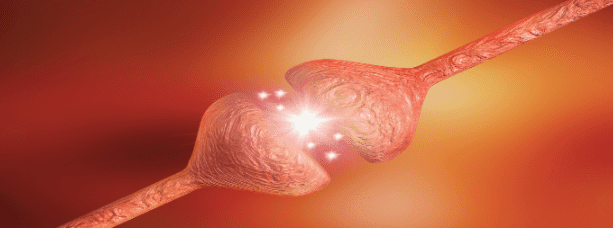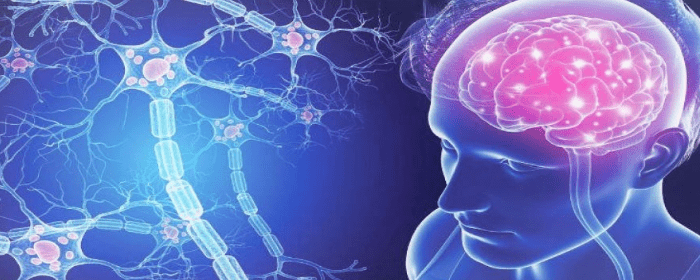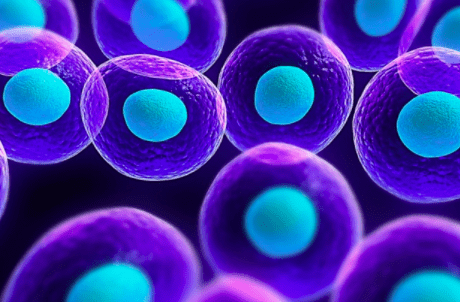
by Stemedix | May 25, 2020 | Stem Cell Therapy, Traumatic Brain Injury
Traumatic brain injury (TBI), also known as concussion, is a common condition that affects thousands of people every year in the United States alone. The most challenging aspect of TBI is its vague clinical presentation, which makes it difficult for physicians to promptly diagnose and treat this condition without a proper history of trauma.
According to the Centers for Disease Control and Prevention (CDC), the number of TBI-related hospital visits and deaths increased by 53% between 2006 and 2014. Unfortunately, patients who survive after a concussion often deal with neurological sequela for the rest of their lives. This article will explore the basic concepts of TBI as well as the role of stem cell therapy in restoring normal neurological function after irreversible damage.
How Do Concussions Happen?
The brain is a fragile organ that’s protected by a boney structure known as the skull. Unfortunately, this protection can be a double-edged sword. To prevent contact between the brain and the skull, a liquid called cerebrospinal fluid (CSF) acts as a shock absorber to avoid any trauma to the brain when the skull is abruptly moved. In other words, the brain is floating in the CSF to be able to easily move around when you change positions.
A concussion occurs when the brain collides with the skull at an intensity that surpasses the CSF-cushioning ability. Consequently, the brain will shrink on itself, sending shock waves through the entire tissue, which tear the neurons. This phenomenon is referred to as diffuse axonal injury. As a result, the interneural network responsible for every task that the brain completes is compromised and may lead to irreversible loss of function.
Stem Cell Therapy and Traumatic Brain Injury
Stem cells have the ability to differentiate into several body tissues, which makes them a candidate to treat and repair damage for a myriad of medical conditions, including traumatic brain injuries.
In a clinical trial, researchers used bone marrow-derived stem cells as repair agents to restore the function of damaged brain tissue after enduring TBI. Stem cells were introduced to patients using minimally-invasive procedures with highly-sensitive imaging guidance to deliver the cells at the exact site of tissue damage.
Researchers stated that “These stem cells secrete growth factors that have shown preclinical benefit and also recruit the patient’s own stem cells through various homing signals. Recent successes with similar stem cell therapy trials in other diseases, such as for heart attack recovery, have generated increased interest in now using these approaches to treat brain injury.”
Moreover, a 2018 study published by nature, scientists aimed to find out if certain types of cell therapy, such as umbilical cord stem cells and bone marrow-derived stem cells benefit patients with traumatic brain injuries. The researchers found that these cells can regenerate neurons and repair damage, which may revolutionize the field of traumatology since patients may restore certain neurological functions even after irreversible damage.
Note that the idea of using stem cell therapy to treat concussions is not new, as a 2002 experimental study on rats concluded that “We show for the first time that the IV administration of human umbilical cord blood cells reduces functional deficits after severe traumatic brain injury in the rat. The injected cells enter the brain, migrate into the injured area, and a few express the neuronal and astrocytic phenotypes and integrate into the vascular structures. Cord blood administration may be a useful treatment for traumatic brain injury.”
The use of stem cell therapy to manage symptoms of TBI are still in the experimental phases; however studies have shown its potential to restore lost functions with minimally-invasive procedures that carry an extremely safe side effect profile.
Contact us today!

by Stemedix | May 18, 2020 | Multiple Sclerosis, Stem Cell Therapy
Multiple sclerosis (MS) is an autoimmune disease that’s increasing in prevalence over the past few decades. According to the National MS Society, more than one million people live with multiple sclerosis in the United States alone. Globally speaking, MS is diagnosed in around 2.3 million patients, with hundreds of new cases every week. Interestingly, people who live in the Northern or Southern extremes of the planet are at a higher risk to develop MS than their counterparts.
Unfortunately, MS is a chronic, progressive condition with no curative treatment.
Multiple Sclerosis and its Impact on Brain Cells
The pathophysiology of MS is quite complex and involves the auto-destruction of the central nervous system (CNS) tissue by antibodies and immune cells. The main target of the immune reaction is the myelin sheaths found on neurons to facilitate electrical conduction. Unfortunately, those myelin sheaths also provide protection for neurons to maintain their optimal function.
Additionally, the inflammation mediated by the immune system damages the integrity of neurons, leading to the loss of millions of cells that play a crucial role in the function of the CNS. Another frustrating aspect of this malady is the recurrent relapses, where patients experience vision problems, muscular weakness, reduction in mobility, and balance issues even with adequate pharmacological therapy.
Today, there is one treatment option that is considered an alternative option to one’s journey to wellness and improvement of symptoms – stem cell therapy.
Stem cell therapy and Neural Damage
Mesenchymal stem cells (MSCs) have incredible regenerative and repairing properties due to their multipotent characteristic that allows them to differentiate into different body tissues. MSCs can be obtained from adipose tissue, bone marrow, umbilical cord (Wharton’s Jelly), and placenta.
For many years, researchers conducted studies to see if MSCs benefit patients with multiple sclerosis, and many results showed positive benefits.
For instance, in a 2019 study published by Stem Cell Investigation, researchers stated that “Upon intravenous injection, MSCs are able to traffic into the brain lesions and improve the survival rate of brain cells.” Although scientists are still researching the underlying mechanism that led to these results, the positive effects of MSCs are attributed to their regenerative, self-renewal, and immunomodulating properties.
One of the most appealing type of stem cell therapy is the umbilical cord-extracted MSCs because of the site’s accessibility, their potentcy, and the absence of any ethical issues. Overall, the scientific community believes that MSCs have great potential in the treatment of Multiple Sclerosis and other neurodegenerative conditions.
Stem cell therapy research has increased over the past few years and is making impacts in the history of medicine and biology. The regenerative properties of these cells has opened a new chapter in the management of conditions and their symptoms that can impact a person’s day to day life. Contact us today for a free consultation.

by Stemedix | May 11, 2020 | Stem Cell Therapy, Osteoarthritis
Knee issues are among the most common musculoskeletal injuries and can occur in individuals of all ages. The complex joint is made up of bone, cartilage, ligaments, and fluid, as well as muscles and tendons which allow for movement. When any of these structures becomes injured or diseased, discomfort and limited range of motion may ensue. Knee problems can create significant strain on an individual’s life, from preventing participation in sports to making it difficult to get out of a chair. Here 4 FAQs about stem cell therapy for knees.
There are many causes for knee issues, the most common of which is osteoarthritis. In this condition, the cartilage in the joint erodes over time, leading to inflammation and pain. Sports injuries are also common culprits; even a simple, sudden twisting movement can tear or sprain structures like the anterior cruciate ligament (ACL), leading to severe pain.
Depending on the severity of a knee condition, prescribed treatment could include rest, rehabilitation, or surgery. Yet, knee problems don’t always improve with these methods, and many patients understandably want to avoid invasive surgery if possible. Fortunately, stem cell therapy is an emerging solution many experts support — find out more about what it entails below.
4 Commonly Asked Questions About Stem Cell Therapy for Knees
What Is Stem Cell Therapy?
Stem cell therapy is a form of regenerative medicine which uses the body’s natural healing mechanism, stem cells, to rebuild compromised tissue at the cellular level. For knee injuries, the goal of the treatment is to alleviate pain, improve mobility, and delay or prevent the need for surgery.
What Knee Issues Can It Address?
Stem cells may be used to address a number of knee issues. In degenerative conditions, such as osteoarthritis, stem cell therapy can help slow the destruction of cartilage and even rebuild it, due to the stem cells’ ability to self-renew and mature into specialized cell types. The cells also have anti-inflammatory properties and may therefore aid in quicker, more thorough healing of acute knee issues, such as injuries to the ACL, meniscus, and other knee structures.
What Does The Process Entail?
The process for stem cell therapy is fairly simple. The cells are extracted, either from the patient themselves or a donor, and then inserted directly into the injured tissue. Thereafter, they’ll begin the healing process. Depending on your condition, your practitioner may recommend several sessions to achieve the best possible results.
What Is The Success Rate?
As with any type of treatment, success rates will vary from one patient to the next. With that being said, research has shown that patients who have received stem cell therapy for knee issues still felt better than their baseline five years after treatment. For patients who have responded poorly to previous treatment methods or want to avoid major surgery, stem cell therapy is certainly an option worth exploring.
If you are tired of dealing with the everyday pain and want relief that lasts then contact us today!

by Stemedix | May 4, 2020 | Stem Cell Therapy, Multiple Sclerosis
Multiple sclerosis (MS) is a condition that affects the central nervous system, disrupting the ways in which information flows within and to and from the brain. Its cause is unknown, though experts believe it may result from a combination of genetic and environmental factors. The trajectory and symptoms of the disease are often unpredictable. People with MS may experience symptoms related to movement, such as tremors or unsteady gait, as well as vision-related changes, slurred speech, tingling or numbness, and fatigue.
MS symptoms typically begin to emerge between the ages of 20 and 50. For some individuals, symptoms may improve or go into remission for periods of time. In some cases, MS symptoms can interfere with daily life, making it difficult to complete everyday activities.
While there are currently no cures available for MS, there are some medications available to aid in symptom management. Yet, these can be costly and may carry side effects.
Stem Cell Therapy for Multiple Sclerosis
Recently, stem cell therapy for Multiple Sclerosis has emerged as a promising treatment with tremendous potential. It is not a cure but has shown potential for symptom improvements. Mesenchymal stem cells (MSCs) have the ability to help control inflammation and restore the myelin sheath, the protective covering that surrounds nerve fibers which is damaged in MS. These powerful cells also have the ability to regulate the immune system, which can aid in symptom reduction.
The reason the immune regulating effects of MSCs are so beneficial to people with MS is that they prevent the immune system from mistakenly attacking the myelin sheath. MSCs may even regenerate myelin sheath where it’s been damaged, known as remyelination.
While results may vary, MS patients who receive stem cell therapy may experience a number of benefits. Some reported include increased energy, strength, mobility, flexibility, and function control. The treatment is also noninvasive, well-tolerated in most patients, and does not require any downtime. With its lasting beneficial healing properties, stem cell therapy appears to be an alternative option, especially for patients whose symptoms interfere with daily life.
If these beneficial healing properties are something you would like to take advantage of then contact us today for a free consultation.

by Stemedix | Apr 27, 2020 | Stem Cell Therapy, Osteoarthritis
Joint issues caused by injury and arthritis can be challenging to treat. While conventional methods like physical therapy, over-the-counter medication, and lifestyle adjustments may help patients find some relief, oftentimes the pain lingers and the condition worsens over time. Patients seeking a lasting solution are sometimes recommended for full joint replacement, but the process is invasive, and as with any procedure, comes with potential risks and complications. Moreover, complete joint replacements aren’t always successful, and when they are, they may not last the duration of a patient’s lifetime. Here we talk about Stem Cell Treatments Vs Joint Surgery.
Understandably, medical experts have long been searching for an alternative for joint surgery. Now, it’s appeared in the form of stem cell treatments.
Why Stem Cell Treatments Instead of Joint Surgery?
The issues described above raise concerns about joint surgery. Surgeon Anthony Miniaci, MD, from the Cleveland Clinic explains that patients in their 50s may ultimately wind up needing multiple replacements for the same joint, so the objective is often to delay surgery when possible. In addition to age, factors such as severity, location on the body, and weight may be assessed to determine whether the operation can be put off.
In lieu of surgery, however, patients still need an effective form of relief. Stem cell therapy is one promising alternative. This treatment uses stem cells, which act as the body’s natural healing mechanism, to restore compromised tissues through powerful repair processes and the formation of new, specialized tissue. The cells can self-renew and transform into virtually any cell type in the body. Treatment is non-invasive and simply encompasses injections instead of full-blown surgery.
Experts are using stem cell therapy in joints commonly affected by injury or arthritis, including the hips and knees. Some doctors, including a specialist at the Mayo Clinic, believes the treatment doesn’t just delay the need for surgery in some cases but may prevent it altogether. As stem cell therapy has widely been deemed safe and effective in numerous clinical studies, it offers a viable option for patients who want the relief that surgery could bring without the pain, long recovery period, and potential complications.
Contact us today for a free consultation!

by Stemedix | Apr 20, 2020 | Stem Cell Therapy
Chances are you’ve heard about the stem cell advancements experts are making in the world of regenerative medicine. For conditions ranging from musculoskeletal injuries to autoimmune conditions, stem cells are showing promise in terms of promoting the body’s healing capacity, regenerating tissue to replace that which has been damaged by illness or disease, and managing or altogether alleviating symptoms. But what exactly are stem cells, and what is it that they do? Here are some Stem Cell facts.
What Are Stem Cells?
Stem cells act as the basis of development in all living things, including humans, animals, and even plants. In humans, they are formed at various points of life and in specific parts of the body. Embryonic stem cells, for example, are only present at the earliest stage of development. At just three to five days of age, an embryo is made up of pluripotent stem cells, which have the capacity to divide into other stem cells or transform into any cell type in the body. These are not cells in which today’s Regenerative Medicine is studying or practicing based on the controversy behind them.
On the other hand, tissue-specific (adult) stem cells emerge during fetal development and stay within the body throughout the course of life. They’re found in bone marrow, adipose (fat), and umbilical cord tissue (UCT), and they can give rise to various types of cells. For instance, research suggests stem cells derived from bone marrow could create heart muscle cells.
What Do Stem Cells Do?
As mentioned above, there are two characteristics which make stem cells so remarkable:
· Self-renewal, or the ability to make copies of themselves
· Differentiation, or the ability to develop into specialized cells
Recently, experts have been leveraging the capabilities of stem cells in regenerative medicine applications to activate a healing response in injured, dysfunctional, or diseased tissue using stem cells. In addition to their abilities to repair and regenerate, stem cells also have secretory benefits known as exosomes, which are critical in the communication between cells. Mesenchymal stem cells, in particular, have immune-modulating and anti-inflammatory effects and a good proliferation rate, making them powerful candidates for tissue regeneration.
Thanks to these incredible properties, stem cells are being leveraged to heal tissue, control symptoms, and deliver rejuvenating effects for a broad range of conditions. Stem cell therapy is being used as an alternative treatment in neurodegenerative conditions such as multiple sclerosis and Parkinson’s disease, for instance, as well as orthopedic issues and injuries, autoimmune disorders, and general wellness and cosmetic concerns. Although it isn’t a cure-all, stem cell treatment does hold enormous potential for improving symptoms and outcomes in patients for a better quality of life.
Contact us today for a free consultation!







 St. Petersburg, Florida
St. Petersburg, Florida
